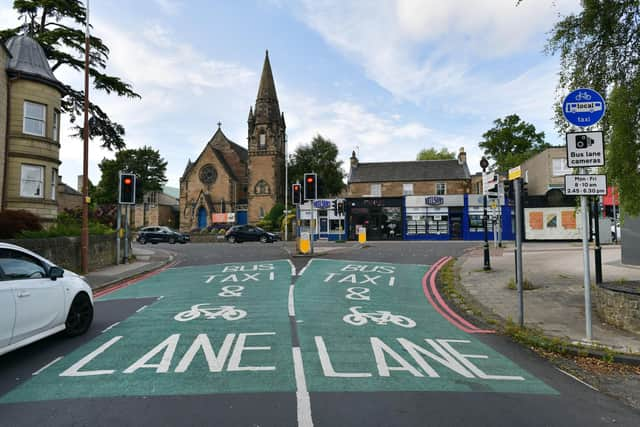Edinburgh transport: Corstorphine Connections low traffic neighbourhood 'isn't working' says councillor
and live on Freeview channel 276
Controversial traffic measures in Corstorphine are not working, a councillor has claimed.
Euan Davidson says the latest figures on traffic flows and the number of fines handed out since the start of the trial low traffic neighbourhood show it is not achieving its objectives.
Advertisement
Hide AdAdvertisement
Hide AdThe scheme, known as Corstorphine Connections, aims to reduce the number of vehicles using residential roads and has seen a ban on vehicles exiting from Featherhall Avenue onto St John's Road as well as a bus gate on Manse Road at the junction with St John's Road, banning cars Monday to Friday 8am to 10am and 2.45pm to 6.30pm.


But data collected a month after it started in May shows an overall increase in traffic in the area and in the first two months of the scheme motorists were fined a total of nearly £100,000 for breaching the bus gate.
Cllr Davidson said: “There has been a massive increase in traffic on Featherhall Avenue, the figures show. There's also been some significant displacement on some of the streets around it, like Station Road and Dovecot Road. So the idea that it's reducing traffic in south Corstorphine generally, it's clearly not – there is an overall increase. And from the evidence we've got so far I’ve not seen that it has increased the number of people walking or cycling.”
He said the figures for fines – £50,730 in June and £48,300 in July – also showed the bus gate in Manse Road was not a success. “The signage and the road markings are clearly not working if we're fining that number of people - people are not doing that intentionally. The two lots of data show this scheme is not achieving its objectives and is causing a huge amount of confusion in the area.”
Advertisement
Hide AdAdvertisement
Hide AdHe called for changes to the scheme, most importantly the removal of the bus gate removed. He said: “There are elements of the scheme people support, like the expansion of the pavements in the High Street and Kirk Loan, which are really welcome. But when you combine it with a bus gate that's costing residents thousands of pounds just through bad implementation we're losing a lot of goodwill.”
However, transport convener Scott Arthur disputed the claim that the low traffic neighbourhood was not working. He said: "The aim of the bus gate on Manse Road was to reduce traffic on what is a key walking route to Corstorphine Primary School and the data shows that certainly after one month there has been a significant reduction in traffic."The data was one month in so it's difficult to draw any real conclusions – people were still coming to terms with it. But it shows there has been no increase in traffic going past the front of the school because I think was a lot of the concern. It shows the bus gate is working and there are fewer cars going along that route. In some routes in the area there has been an increase in traffic, but when you look at the levels of traffic on those roads, in absolute terms the traffic levels are still low.”
And he rejected claims the signage for the bus gate was unclear or confusing. “If you stand in front of the junction it's very clear it's a bus gate, it's very clear its one way and it's very clear what the hours of operation are. You can't miss it. It's painted on the road in quite large letters. At the last community council meeting i attended one of the concerns was there was too much signage on the street and it was cluttered.”
Cllr Arthur said more traffic data would be collected in the autumn to give a picture of the scheme after six months, when traffic levels are expected to have settled down.